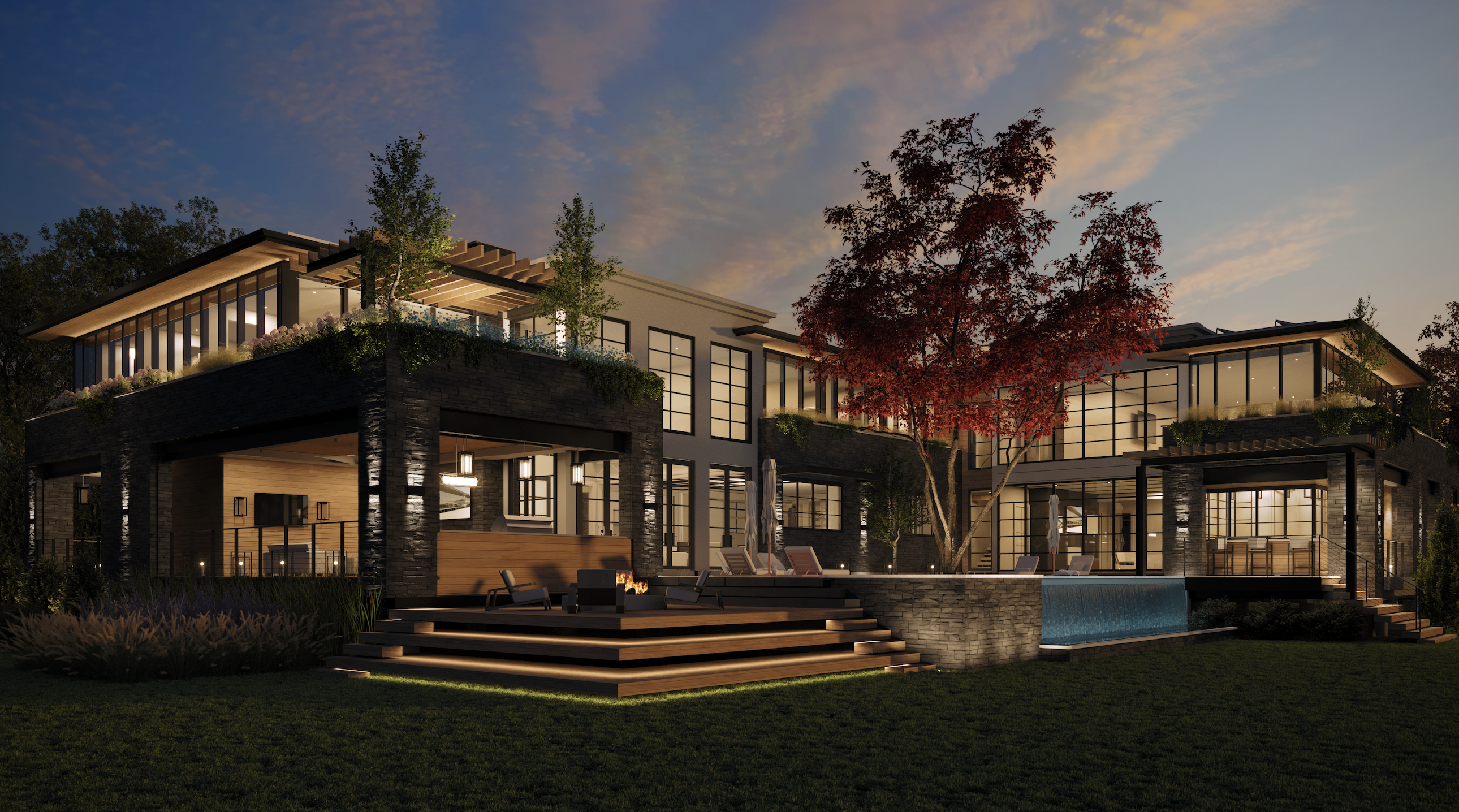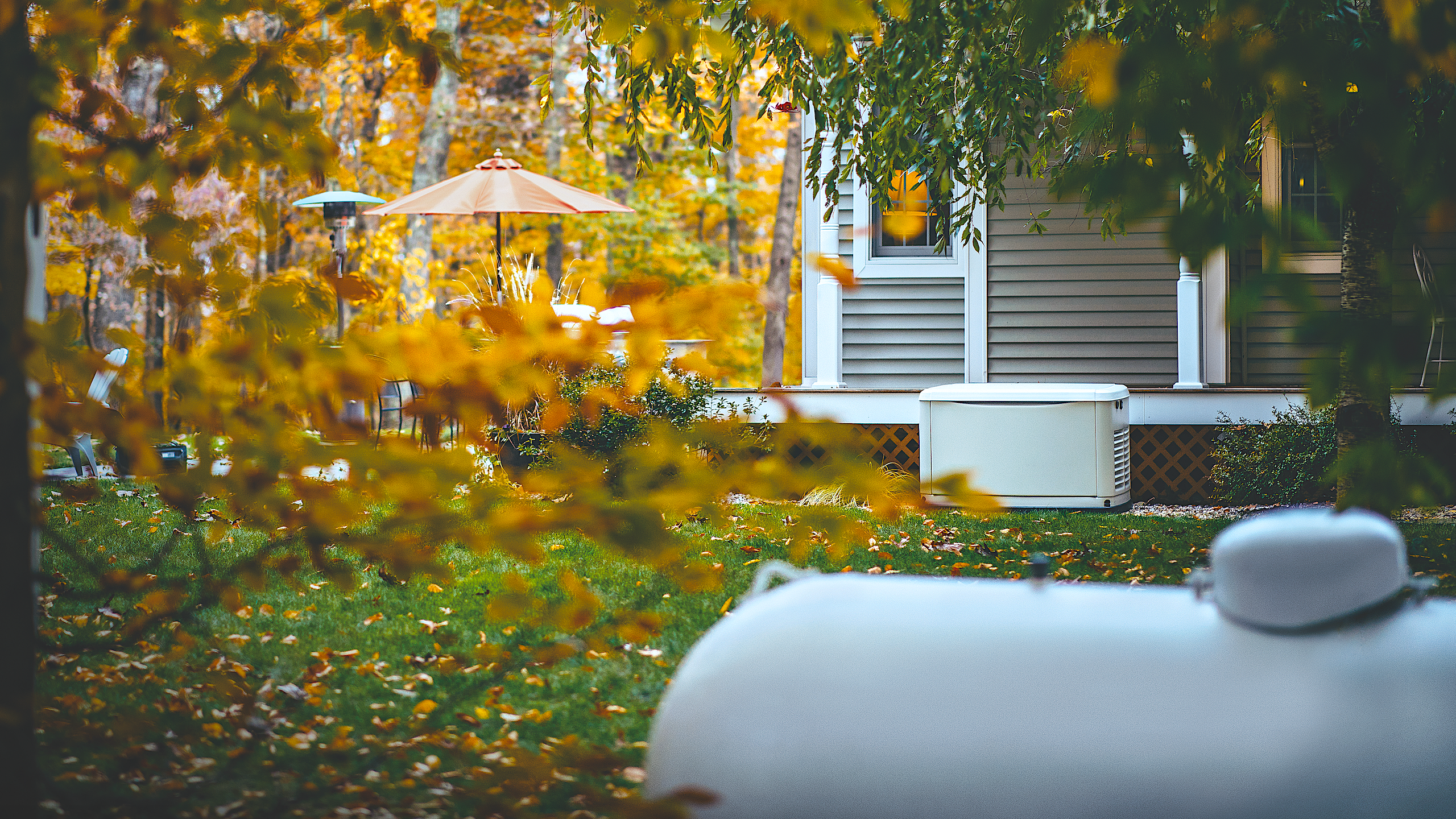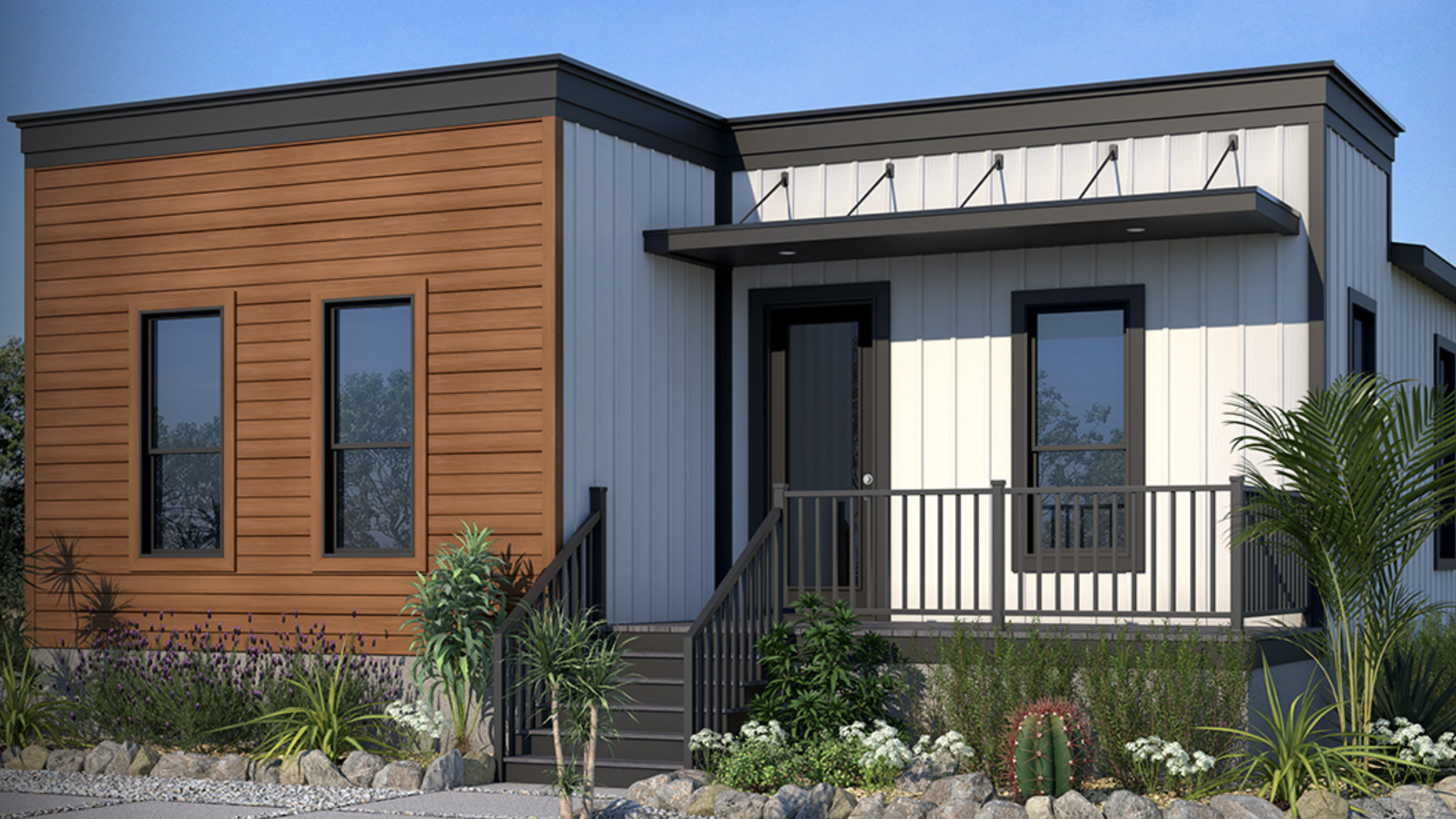|
Building a home that stands up to the harsh conditions that characterize a coastal construction site requires the right combination of time-tested materials and cutting edge technology as well as knowing what works and what doesn't — and that comes with experience, says Mt. Pleasant, S.C.-based general contractor Phillip Smith. This Isle of Palms 4,415-square-foot, shingle-style home, designed by architect Christopher Rose and built by Smith, serves as a perfect example of how to integrate new residential construction into an ecologically sensitive and sometimes turbulent setting.
 The front-loading garages on the street elevation is minimized by separating them and emphasizing the central entry stairway and mid-level porch instead. The home has natural cedar shakes for the siding and roof. |
"The coastal environment is a high wind and seismic zone, so you always have to keep in mind that a home located here will be wide open to all types of weather extremes," says Smith, who has built homes on South Carolina's barrier islands since 1989. Weather can include everything from blazing hot sun, hurricane-force winds, heavy rains and shifting soils, as well as the corrosive effect of saltwater spray on a home's exterior.
Smith has about seven custom projects underway at a time for a mix of clients who either occupy their home full-time or use it as a traditional beach vacation home. "No matter what, I build them all as though they are meant for full-time use," he says. This includes using high-quality, low-maintenance products and materials that will hold up in the coastal climate and incorporating the latest technology in structured wiring throughout the home.
Rose agrees. "Most of the secondary homes that I design eventually become permanent residences, so I encourage my clients to keep that in mind from the outset of the project," he says. "We often have people who build their home thinking of it as a vacation retreat, fall in love with it and end up spending a lot more time there than they had originally intended."
 |
Rose began his architectural career doing commercial work, and his firm today focuses on custom residential design. "I love the personal interaction and problem-solving situations involved in having an actual client. For any custom project, we stay 100 percent involved in the process until the home is completed. ... They can be as engaged or as disengaged from the process as they want to be."
"We do an extensive site analysis for each of our clients in order to determine where the sun rises and sets at different times of the year as well as where the prevailing breezes come from throughout the year so that they can take advantage of them. No one wants to live in a hermetically sealed house."
This home, designed as a secondary residence, features classic, shingle architecture. Its gambrel roof form gives the option for additional livable space on the home's upper floor.
In this case, he says, the homeowners were very different, one being traditional and the other more contemporary, in taste. "I blended both together in order to create a serene vacation home," he says. "It is elegant but informal at the same time."
The key design requirements for this home included maximizing views from the principal rooms and having a truly private master retreat.
 |
"Building codes for new construction in most coastal locations prohibit habitable space on the ground level, so even with a traditional floor plan, your living space is already elevated 10 feet," says Rose. "By keeping the living space downstairs in this home, we were able to maintain the close connection between the indoor space and the outdoor pool/deck entertaining area that the clients wanted."
The home features an elevator that links the garage/entry level with the upper floors. "An elevator is almost a standard for our area," says Rose. "Not only does it make transporting groceries and luggage in and out of the home much more pleasant, but it is also good insurance for future accessibility. We always either design one into the original plan or include a spot where one can be easily added later on."
 |
"Having a peaceful, quiet master suite was very important to these clients," says Rose. "They wanted the convenience of a main-floor location but did not want the noise of secondary bedrooms above them."
In most cases, Rose says that his clients eschew a traditional formal living and dining room in favor of a more casual entertaining great room such as in this project. Providing the space for a separate study or office is essential, Rose says. "Today people expect to be able to conduct their business affairs from wherever they are."
Because the building site was surrounded on three sides by a flood plain, the garage had to be on the home's front elevation. "Normally we avoid front-entry garages," says Rose, "but in this case we had no choice." His solution was to minimize the impact of a single, large garage door by creating two separate garages and dividing them with a central stairway that leads to the front door. Decks extend over each garage to create shadow lines that make them less prominent.
Coastal ChallengeBut the very element that makes a coastal location so compelling to home buyers also serves as a builder's biggest foe. "Mold and mildew are huge liability issues for builders today, so controlling moisture is essential," says Smith.
"The coastal climate is a very humid, salty, caustic environment," says Rose. "You learn to get water away from the exterior envelope of a home as quickly as possible. Studs, for example, should all be treated with waterproofing before you close up the envelope. If you don't do things properly from the start, siding can rot in two or three years."
Homes built in coastal locations must also be designed to withstand hurricane-force winds and strong, slow-moving storms that have the potential to generate extreme high tides that can undermine a foundation. The entire structure — from footings to roof rafters — must be strapped together to prevent damage from the forces of uplift and shear. "We are building homes on sand hardpack on barrier islands where we can't always tell the exact geologic age of the land," says Rose. "We always hire a geotechnical engineer to come in and do soil borings to assist us in determining the best type and location for the foundation. In most cases, we use conventional spread footings or pilings, sometimes a combination of both."
Builder and architect favor the use of natural materials on exterior elevations in their market, including Western red cedar shingles, slate roof tiles and Ipe wood decking. "All are time-tested materials that are strong, stable and inherently bug- and disease-resistant," says Rose. "We'll try new things but only after they're proven to work well. You have to remember that maintenance in this location is a very big issue.
"Not only does the homeowner not want to have to spend a lot of time working on their home, it is also a matter of practicality. Because of flood-zone building requirements, the trim and fascia on a waterfront home may be 40 feet off the ground. It is not something that you can just go out and touch up."
Smith uses 5/8-inch plywood sheathing, stainless or galvanized steel and copper flashing for all exposed metal on the exterior to help the structure stand up to the coastal climate. All lumber, siding and shingles are primed and sealed on all sides before installation.
Creating a Water-Tight EnvelopeExcess moisture can negatively affect a new project in a coastal climate in two ways. It can infiltrate the exterior shell of the home during storms resulting in leaks or rot. Or it can form indoors — the result of condensation that forms when hot, outside air meets cooled, air-conditioned indoor air.
"You have to seal off the most likely entry points into the house for water," says Rose, "including metal pans under the door sills and flashing around the windows. You also have to carefully consider the placement of windows so that you get the best view without compromising strength."
Reacting to changes in building codes for hurricane-prone areas in recent years that require higher design pressure ratings, for windows, manufacturers are providing builders and architects with products that are stronger and less susceptible to damage and leakage than ever before, says Rose. "Three years ago only a handful of manufacturers offered hurricane-resistant windows. Today, pretty much all of them are meeting these criteria."
"The water that does make its way inside usually gets in through the openings around windows and doors," says Smith, who uses a ½-inch caulk joint to form a watertight seal in areas that may be compromised as the structure shifts.
Smith says one of the most significant changes that he has seen in terms of establishing superior indoor air quality and eliminating mold and mildew issues has been in HVAC and insulation products and how they are used.
"We have replaced conventional fiberglass batt insulation with sprayed-in-place, closed-cell foam insulation for all interior and exterior walls from the foundation to the roof," he says. Closed-cell spray foam insulation not only provides a higher R-value than traditional insulation but also reduces moisture transmission and condensation inside the home. "Traditional fiberglass insulation just can't control the dew point between hot and cold air inside a house with the same efficiency."
Smith has also switched from a standard air-handling system to one that features a variable speed blower. Because this type of air handler runs continuously at lower speeds, it provides the home with a steady flow of air rather than strong off and on bursts. Benefits include more consistent indoor temperatures, less noise, higher energy efficiency and an increase in the effectiveness of the air purifying and dehumidification system, which he uses to augment the function of the air handler.
"You really need all three of these elements — closed cell insulation, a variable-speed air handler and a separate air dehumidifier/purifier," says Smith, "because they work together as a system."
While costs for this type of system are higher — generally four times as much for closed cell insulation and 40 percent more for the HVAC equipment, says Rose, his clients understand the benefit. "They recognize that they're getting a much better house as a result."
The Coastal EnvironmentIn the majority of cases, beachfront development is strictly regulated in terms of where the structure can be located, how high it can be and the effect it will have on the local ecology. All runoff from the construction site must be carefully filtered before it is released into the watershed.
"When you are building in the coastal environment," says Smith, "you always have to be careful to have as little impact on the land that you're working on as possible."
The home site sits on a peninsula that abuts a salt marsh, so the entire footprint was based on the Coastal Critical Line, says Rose. In South Carolina, the Coastal Critical line is the "build to" line on waterfront properties as determined by the Army Corps of Engineers.
"The salt marsh is really its own amazing ecosystem," says Rose. "It attracts an abundance of wildlife and actually does have four seasons. It really can be more interesting to look at than the ocean itself."
The home, which took two years for design and construction, was completed in January 2002.
|
Related Stories
Custom Builder
HUD Secretary Marcia Fudge Announces Forthcoming Resignation
U.S. Department of Housing and Urban Development Secretary Marcia Fudge has said that she intends to leave office later this month
Custom Builder
Floodproof on a Floodplain
An impressive addition to the IDEA Home series, the NEWLOOK Experience Home is a master class in engineering and creative design, with builder Michael Freiburger out-thinking an exceptionally tricky lot
Custom Builder
Why Start a Custom Building Business?
In this Taking Care of Business segment, expert coach and trainer Scott Beebe joins our host Duane Johns to talk about where custom builders could be getting off on the wrong foot
Custom Builder
3 Questions Answered About Reliable Energy in Home Construction
Energy expert Bryan Cordill makes a case for why and how propane is an answer to growing concerns about reliability and resilience in home construction
Business
Custom Builder to Talk Color Design with Becki Owens at IBS
At this year's IBS, renowned designer Becki Owens will sit down with host James McClister, editor of Custom Builder, to discuss a variety of topics from basic color play in design to the Allura Spectrum palette, a collection of Sherwin-Williams colors curated for the benefit of pros
Business
PERC Highlights Sustainability and Efficiency at IBS with 'Clean Build Conversations'
Hear from industry standouts Matt Blashaw and Anthony Carrino at this hour-long Show Village event
Business
The Five Foundational Cornerstones
Business coach Scott Beebe shares insights into the often ignored business basics that could be the difference between long-term success and failure
Custom Builder
Start With the Why: Fundamentals of the Custom Builder Business
In our inaugural episode of Taking Care of Business, host and custom builder Duane Johns sits down with Scott Beebe, head coach and founder of My Business on Purpose, to talk vision, purpose, mission, values, and more
Business
Why AI Is Now Key to Our Trade Partner Strategy
Thompson Custom Homes Business Manager Erin Day explains how AI became a crucial part of building and maintaining successful trade partner relationships
Business
Thriving in 2024: Tips for Succeeding in an Uncertain Environment
Author and sales expert Mark Richardson shares his insights on the industry and how to rethink your approach to success in the new year












